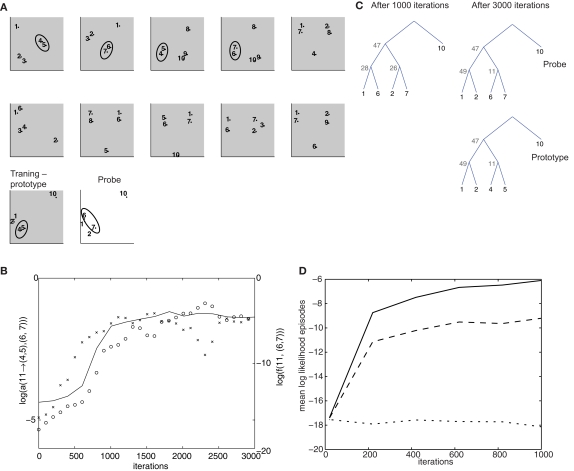Figure 5.
Simulation of top-down influences. (A) Training set, composed of 11 5-item episodes (gray background), and a “probe” episode (white background). The groups (4,5) and (6,7), which occur in the same-context in different episodes, are highlighted by the ellipses. The last training episode is termed prototype, because it contains the same items as the test episode, except for a (4,5) to (6,7) substitution. (B) Time course of log-probability of the transition elements from non-terminal node 11 to the groups (4,5) and (6,7) are indicated, respectively, by crosses and circles. The outside probability that 11 generates (6,7) in the second training episode is also shown (solid line). (C) Optimal parse trees for the test episode after 1000 and 3000 iterations and for the prototype episode after 1000 iterations. (D) Cross-validation test of potential over-fitting behavior. From the grammar model trained in the simulation for (B,C), 48 episodes were drawn. The first 40 were used for training a new grammar model for 2000 iterations. The remaining 8 were used for cross-validation. The figure shows the time of evolution average log-likelihood for the training set (solid line), the cross-validation set (dashed line) and a scrambled control set obtained by randomly shuffling the item labels from episodes drawn from the same grammar model as the previous ones.

